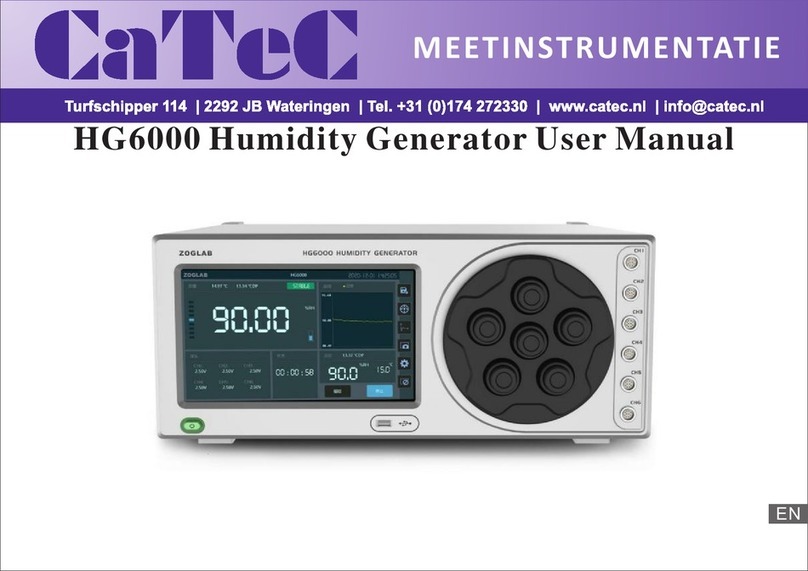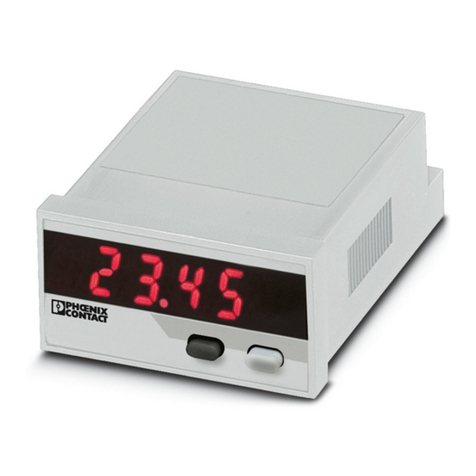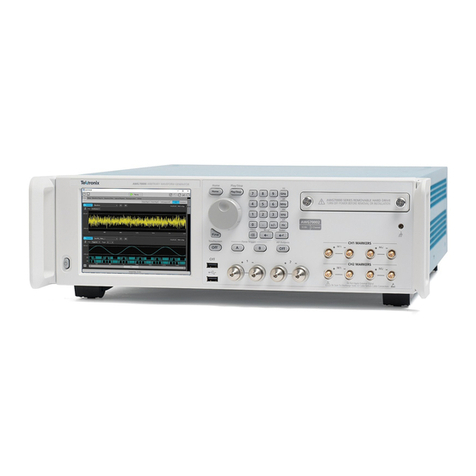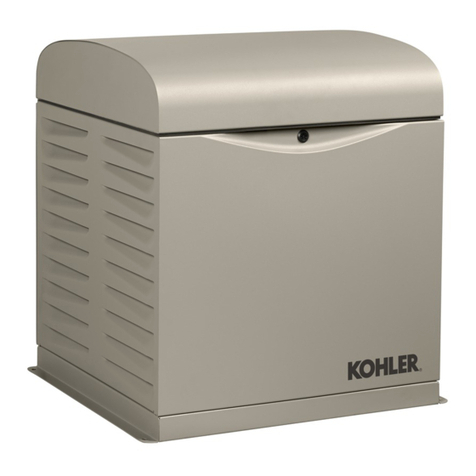Gopel Electronic basicCON 4115 User manual

GOEPEL electronic GmbH
Goeschwitzer Str. 58/60 •D-07745 Jena
+ 49-3641-6896-597 • ats_support@goepel.com • www.goepel.com
basicCON 4115
LVDS Frame Generator
User Manual
(Translation of Original docu)
Document version 1.5

Issue: April 2014
© 2014 GOEPEL electronic GmbH. All rights reserved.
The software described in this manual as well as the manual itself are supplied under license and
may be used or copied only in accordance with the terms of the license.
The customer may make one copy of the software for safety purposes.
The contents of the manual is subject to change without prior notice and is supplied for information
only.
The hardware and software might be modified also without prior notice due to technical
progress.
In case of inaccuracies or errors appearing in this manual, GOEPEL electronic GmbH assumes
no liability or responsibility.
Without the prior written permission of GOEPEL electronic GmbH, no part of this documentation
may be transmitted, reproduced or stored in a retrieval system in any form or by any means
as well as translated into other languages (except as permitted by the license).
GOEPEL electronic GmbH is neither liable for direct damages nor consequential damages from
the company’s product applications.
printed: 15.04.2014
All product and company names appearing in this manual are trade names or registered trade names of their respective owners.

Table of Contents
basicCON 4115 – User Manual I
1INSTALLATION..............................................................1-1
1.1 HARDWARE INSTALLATION ...................................................1-1
1.2 DRIVER INSTALLATION........................................................1-2
2HARDWARE ...................................................................2-1
2.1 DEFINITION .....................................................................2-1
2.2 TECHNICAL SPECIFICATION ..................................................2-4
2.2.1
Dimensions
............................................................2-4
2.2.2
Properties
..............................................................2-4
2.3 DISPLAY TIMINGS..............................................................2-5
2.4 CONSTRUCTION ................................................................2-7
2.4.1
Serializers
..............................................................2-7
2.4.2
Assembly
...............................................................2-7
2.4.3
Power supply
..........................................................2-8
2.4.4
Addressing
.............................................................2-8
2.4.5
LVDS Interface
.......................................................2-9
2.4.6
LED Indication
......................................................2-11
2.5 DELIVERY NOTES.............................................................2-12
3SOFTWARE ....................................................................3-1
3.1 G-API PROGRAMMING........................................................3-1


Installation
basicCON 4115 – User Manual 1-1
1Installation
1.1 Hardware Installation
Generally hardware installation for basicCON 4115 means connecting
the cables for USB (or RS232), LVDS and power supply (see
Hardware).
Please make absolutely certain that all of the installation procedures
are carried out with your system switched off.

Installation
1-2 basicCON 4115 – User Manual
1.2 Driver Installation
For proper installation of the GOEPEL electronic USB drivers on your
system, we recommend to execute the G-USB driver setup.
To do that, start the
G-USB-Setup-*.exe
setup program (of the
supplied CD, “*” stands for the version number) and follow the
instructions.
At present, the available device driver supports Windows®2000/ 7/
and XP systems.
After driver and hardware installation, you can check whether the
devices are properly embedded by the system (for example by means
of the Windows®Device Manager):
Please note that the Device Manager shows ALL USB controllers
supported by this driver.
If required, your basicCON 4115 can also be controlled via the serial
RS232 interface.
Then, the G-USB driver setup is not necessary, but the device can
NOT be operated by the G-API.
Figure 1-1:
Display of Device Manager

Hardware
basicCON 4115 – User Manual 2-1
2Hardware
2.1 Definition
The basicCON 4115 LVDS Frame Generator is a GOEPEL electronic
stand-alone device with USB 2.0 interface to be connected to a PC or
laptop, in particular developed for applications out of complex test
systems.
The basicCON 4115 is especially used in automotive technology to
record and evaluate image data transferred by LVDS systems.
The basicCON 4115 device has the following features:
♦LVDS data rates up to 3000Mbit/s
♦Pixel clock frequency up to 33MHz
with a color depth of 24 bits
♦Maximal 1 Megapixel resolution
♦USB 2.0 (if required also RS232) interfaces
♦4Mbyte SRAM working memory
♦32Mbyte Flash ROM image memory
♦Changeable LVDS top-board
Available types: MAX9209, MAX9213, MAX9247, DS90C241,
DS90C385A, DS90UR905Q, DS90UB925Q and INAP125T24
The APIX 2 link is effected by the INAP375T onboard
transmitter
♦Visualization of the controller states by eight (ten) LEDs
on the front panel (see LED Indication)
The LVDS Frame Generator can store about 20 images in the bitmap
format 800x480x24, and display them within less than one second.
Interleaving of two images for dual view displays is executed onboard
in the microcontroller.
The images are stored in the flash ROM via the USB connection
(if required also RS232 is possible), while the LVDS Frame Generator
itself is operated via PC software.
The basicCON 4115 with the INAP375T APIX 2 transmitter can also
receive control data via uplink data streams (but no RGB or audio
signals).
The communication channels, transferring additionally data in both
directions, are controlled by the PC via an integrated SPI data
interface.
Transferring the image data to the display as well as the additional
data takes place via the LVDS standard.

Hardware
2-2 basicCON 4115 – User Manual
Compared with Figure 2-1, the LVDS Frame Generators in the APIX 1
and APIX 2 versions offer additionally one input and one output for
DUT power supply (see Power supply) as well as in the APIX 2
version four LEDs (presently two of them without any function) for the
status display of the APIX 2 link (see LED Indication):
Figure 2-1:
basicCON 4115
Figure 2-2:
basicCON 4115/ APIX 2

Hardware
basicCON 4115 – User Manual 2-3
At the device’s rear side you find the following connections:
♦Banana sockets for power supply (left)
♦DC socket for the AC adaptor plug (center)
♦RS232 socket for the serial interface (top right)
♦USB-B socket for the USB 2.0 interface with USB standard
assignment (below right)
Please refer to chapter Power supply for more information.
Figure 2-3:
basicCON 4115 – Rear view

Hardware
2-4 basicCON 4115 – User Manual
2.2 Technical Specification
(width x height x depth):
♦basicCON 4115: 126 mm x 51 mm x 183 mm
Symbol Parameter min. typ. max. Unit Remarks
ISS Supply current 350 500 mA
VSExt External supply voltage 8 12 25 V
VDUT In Supply voltage for test object 12 V Only for APIX
versions
IDUT In Input current for test object 3 A Only for APIX
versions
VLVDS Differential LVDS output voltage ±50 ±500 mV Depends on the
transmitter
ILVDS Differential LVDS output current ±40 µA Depends on the
transmitter
ZLVDS LVDS input impedance 100 Ω
fLVDS LVDS data rate 120 3000 Mbit/s Depends on the
transmitter
Please use the supplied USB cable to connect a basicCON 4115
stand-alone device to the PC’s USB interface.
Other cables may be inapplicable.
2.2.1 Dimensions
2.2.2 Properties

Hardware
basicCON 4115 – User Manual 2-5
2.3 Display Timings
To control different displays, the basicCON 4115 LVDS Framegenerator
generates signals according to the patterns shown in Figure 2-4 and
Figure 2-5.
The Timing values can be parameterized according to Table1.
By the LVDS serializer this data is serialized and transferred to the
display.
synchronisation range
active display range
H_ACTIVE
H_TOTAL
V_ACTIVE
V_TOTAL
Figure 2-4:
Display Timings 1

Hardware
2-6 basicCON 4115 – User Manual
FRONT
PORCH BACK
PORCH
RGB
H_TOTAL/V_TOTAL
HSYNC
VSYNC
ENABLE
RGB/
CNTRL
SYNC
WIDTH
BLANK_WIDTH
H&V H&V H&V
H&V
Figure 2-5: Display Timings 2
Signal Default Unit max. Remarks
1
H_TOTAL 1056 clocks 2000
2
H_BLANK_WIDTH 256 clocks 1000 Time for the control data
transmission (must be greater than
H_FRONT_PORCH + H_SYNC_WIDTH)
3
H_SYNC_WIDTH 128 clocks 998
4
H_FRONT_PORCH 40 clocks 998
5
V_TOTAL 521 lines 2000
6
V_BLANK_WIDTH 41 lines 1000 Must be greater than
V_FRONT_PORCH + V_SYNC_WIDTH
7
V_SYNC_WIDTH 2 lines 998
8
V_FRONT_PORCH 9 lines 998
9
Pixel clock frequency 33.00 MHz 33 Three available frequencies:
14 MHz
20 MHz
33 MHz
Table 1: Input parameters
H_ACTIVE results from H_TOTAL –H_BLANK_WIDTH
V_ACTIVE results from V_TOTAL –V_BLANK_WIDTH
H_BACK_PORCH results from
H_BLANK_WIDTH –H_FRONT_PORCH –H_SYNC_WIDTH
V_BACK_PORCH results from
V_BLANK_WIDTH –V_FRONT_PORCH –V_SYNC_WIDTH
Only during the H_BLANK_WIDTH time control data is sampled.
That means, that H_FRONT_PORCH +H_SYNC_WIDTH must be less
than H_BLANK_WIDTH.
V_ BLANK_WIDTH must be greater than
V_FRONT_PORCH +V_SYNC_WIDTH
otherwise the image is read wrongly from the memory.

Hardware
basicCON 4115 – User Manual 2-7
2.4 Construction
basicCON 4115 devices are delivered with a built-in LVDS transmitter
(serializer).
The following serializers are available or planned to be used:
LVDS Serializer Properties Remarks
MAX9247 18 bits color depth, 9 bits control Transmitter for basicCon 4120
MAX9209 18 bits color depth, 3 bits control 4-channel LVDS
MAX9213 18 bits color depth, 3 bits control 4-channel LVDS
DS90C241 21 bits color depth, 3 bits control Transmitter for basicCon 4120
DS90C385A 24 bits color depth, 3 bit control 5-channel LVDS
DS90UR905Q 24 bits color depth, 3 bits control Transmitter for basicCon 4120
DS90UB925Q 24 bits color depth, 3 bit control Transmitter for basicCon 4120
INAP125T24 24 bits color depth, 3 bits control Transmitter for basicCon 4120
INAP375T 24 bits color depth, 3 bits control APIX2 link
For all basicCON 4115 variants (except of the APIX 2 variant), the
Serializer and the LVDS connector (for the variant for APIX 1 also the
connector for the DUT power supply) are mounted on the LVDS top-
board.
This allows exchanging the serializer if required. In such a case,
please contact our Support department (ats_support@goepel.com).
2.4.1 Serializers
2.4.2 Assembly

Hardware
2-8 basicCON 4115 – User Manual
Power supply with 8..25 VDC (and approx. 300 mA quiescent current
at 12V) is effected via the two ext. Power Supply banana females
(red = plus/ blue = minus, see Figure 2-3).
These females are used to supply the internal logic. In addition, the
blue female is connected with the GND connections of the USB and
LVDS interfaces.
Alternatively, the DC socket right to the females can be used for
power supply.
This DC socket has the following characteristics:
♦Opening diameter 5.6 mm
♦Center pin diameter 2.0 mm
♦Outside ground
♦Inside 8-25V
Please use the ext. Power Supply females OR the DC socket for
power supply.
The INAP125T24 and INAP375T serializers have an LVDS connector
with an additional power supply connection to supply the display or
the test object.
This power supply is effected via the two Power DUT In banana
sockets (red = plus/ blue = minus), located left on the front panel.
Addressing several basicCON 4115 devices is effected exclusively via
their serial numbers: The device with the LEAST serial number has
always device number 1.
2.4.3 Power
supply
2.4.4
Addressing

Hardware
basicCON 4115 – User Manual 2-9
LVDS is a serial broadband transmission standard, becoming more and
more important in automotive technology to transfer video data.
Data is transmitted differential on two signal lines with very low
voltage and current, and frequencies more than 1GHz up to 3GHz.
Therefore, appropriate connectors and cables are strongly required for
failure-free transmission.
LVDS Serializer and LVDS connector are mounted on the pluggable
LVDS top-board (to be able to adapt these components to different
displays very fast).
The used serializer and the deserializer at its counterpart are
decisive for proper operation of a LVDS interface. The LVDS
connection does only operate properly in the case that all members
use compatible components.
For this reason, please specify the pixel clock frequency of the
receiver with your order.
The following connector is used for the MAX9247, DS90C241,
DS90UR905Q and DS90UB925Q top-boards:
D4S20A-40ML5-Z of Rosenberger company
Pinout:
1–
LVDS–
2– NC 3–
LVDS+
4–
GND
Shield –
GND
The DS90UR905Q top-board can be made compatible to the
DS90UR906Q, DS90UR124 and DS90C124 serializers by configuration.
For compatibility to the above mentioned serializers, their assignment
must comply with the DS90UR905Q data sheet.
The DS90UB925Q top-board can be made compatible to the
DS90UB926Q and DS90UR906Q serializers by configuration.
For compatibility to the above mentioned serializers, their assignment
must comply with the DS90UB925Q data sheet.
The MAX9209 and MAX9213 top-boards are operating with four LVDS
channels (3x RGB data, 1x clock).
Therefore they have the following 10-pole connector:
GT17V-10DP-DS(70) of Hirose company
Pinout:
1–
LVDS Clk+
2–
LVDS Clk–
3–
GND
4–
GND
5–
LVDS 0+
6–
LVDS 0–
7–
LVDS 1+
8–
LVDS 1–
9–
LVDS 2+
10 –
LVDS 2–
Shield –
GND
2.4.5 LVDS
Interface

Hardware
2-10 basicCON 4115 – User Manual
The DS90C385A top-board is operating with five LVDS channels
(4x RGB data, 1x clock).
Therefore it has the following 36-pole connector:
MDR N10236-52B3PC of 3M
Pinout:
1 – LVDS 0–2 – LVDS 1–3 – LVDS 2–4 – LVDS Clk–
5 – LVDS 3–6 – GND 7 – NC 8 – NC
9 – NC 10 – NC 11 – NC 12 – NC
13 – NC 14 – NC 15 – NC 16 – NC
17 – NC 18 – NC 19 – LVDS 0+ 20 – LVDS 1+
21 – LVDS 2+ 22 – LVDS Clk+
23 – LVDS 3+ 24 – NC
25 – NC 26 – NC 27 – NC 28 – NC
29 – NC 30 – NC 31 – GND 32 – NC
33 – NC 34 – NC 35 – NC 36 – NC
Shield – GND
For the INAP125T24 APIX 1 transmitter top-board and the INAP375T
APIX 2 onboard transmitter, the following connector is used:
99S20D-40MA5-D of Rosenberger company
Pinout:
1– LVDS Out–2– LVDS In+ 3– LVDS Out+ 4– LVDS In–
5– V Out+ 6– V Out–Shield – GND
The APIX 1/ APIX 2 configurations can be adapted if required.
Default configuration: 500Mbit/s bandwidth, 24 bit color depth, rising
pixel clock frequency edge and dedicated upstream channel.
For the connection, use only STP cables with 100Ω impedance and
corresponding connector.
When connecting the cables, please pay attention to connect the wire
pairs always to LVDS+ and LVDS–each.

Hardware
basicCON 4115 – User Manual 2-11
The LEDs 1..8 arranged near to the LVDS connector show the current
operating state of the basicCON 4115 Frame Generator, LED 9 and
LED 10 (if applicable) show the transfer status of the APIX 2 link:
LEDs
1 From FPGA FPGA firmware loaded
2 From FPGA LVDS firmware initialized
3 From FPGA Send image memory data
4 From FPGA Send data to display
5 From µC Read Bootloader/ Flash memory
6 From µC Write Bootloader/ Flash memory
7 From µC USB/ RS232 data reception
8 From µC USB/ RS232 data transmission
Only for APIX 2 devices:
9 From transmitter APIX 2 link reset
10 From transmitter APIX 2 link status
11 Not used
12 Not used
2.4.6 LED
Indication
4¡8¡12 ¡
3¡7¡11 ¡
2¡6¡10 ¡
1¡5¡9¡

Hardware
2-12 basicCON 4115 – User Manual
2.5 Delivery Notes
The basicCON 4115 LVDS Frame Generator can be delivered in the
following variants with the following accessories (please specify the
pixel clock frequency with your order):
♦basicCON 4115.10 with MAX9247 top-board
♦basicCON 4115.20 with MAX9209 top-board
♦basicCON 4115.30 with MAX9213 top-board
♦basicCON 4115.35 with DS90C385A top-board
♦basicCON 4115.60 with DS90C241 top-board
♦basicCON 4115.70 with INAP125T24 APIX 1 top-board
♦basicCON 4115.80 with DS90UR905Q top-board
♦basicCON 4115.85 with DS90UB925Q top-board
♦basicCON 4115.90 with INAP375T APIX 2 serializer onboard
♦ST 4115.10 MAX9247 top-board
♦ST 4115.20 MAX9209 top-board
♦ST 4115.30 MAX9213 top-board
♦ST 4115.35 DS90C385A top-board
♦ST 4115.60 DS90C241 top-board
♦ST 4115.70 INAP125T24 APIX 1 top-board
♦ST 4115.80 DS90UR905Q top-board
♦ST 4115.85 DS90UB925Q top-board
♦CAB USB 1m USB cable “Premium”

Software
basicCON 4115 – User Manual 3-1
3Software
3.1 G-API Programming
The G-API (GOEPEL API) is the C-programming user interface for
GOEPEL electronic hardware under Windows®.
It provides a wide, hardware independent command set for CAN, LIN,
K-Line, MOST, FlexRay, LVDS, ADIO and Diagnostic services.
No matter whether a PXI/ PCI, USB and Ethernet device is used, the
commands remain the same.
The hardware abstraction introduced with the G-API gives the test
application parallel access to the hardware, allowing one application to
access multiple hardware interfaces; as well as multiple applications
can access the same hardware interfaces in parallel.
Another feature introduced by the G-API is the asynchronous
hardware access. This means no blocking execution for pending
firmware commands. The command acknowledgement is provided via
callback mechanism.
With the HardwareExplorer GOEPEL electronic provides a hardware
configuration and management tool, offering users an easy way to
manage their hardware configurations and identifying specific
hardware interfaces by logical names. Using logical interface names in
the application saves from rebuilding the application when porting it to
another interface or controller board, as the interface can be easily
reassigned in the HardwareExplorer.
Furthermore the HardwareExplorer provides a simple means of testing
the interaction between hardware and software by executing the
integrated self-tests.
Please consult the G-API documentation for further information.
This documentation and the installation software are located in the
G-API
folder of the supplied Product CD.

Table of contents
Popular Portable Generator manuals by other brands

Yamaha
Yamaha FB-01/U owner's manual

Powermate
Powermate 62929 Operator's manual

World Video Sales
World Video Sales MicroImage Video Systems PG315N manual
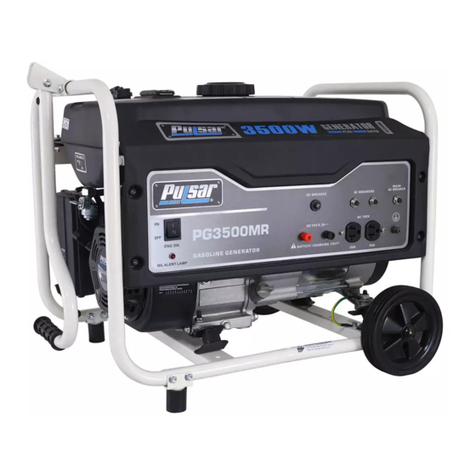
Pulsar
Pulsar PG3500MR Operator's manual
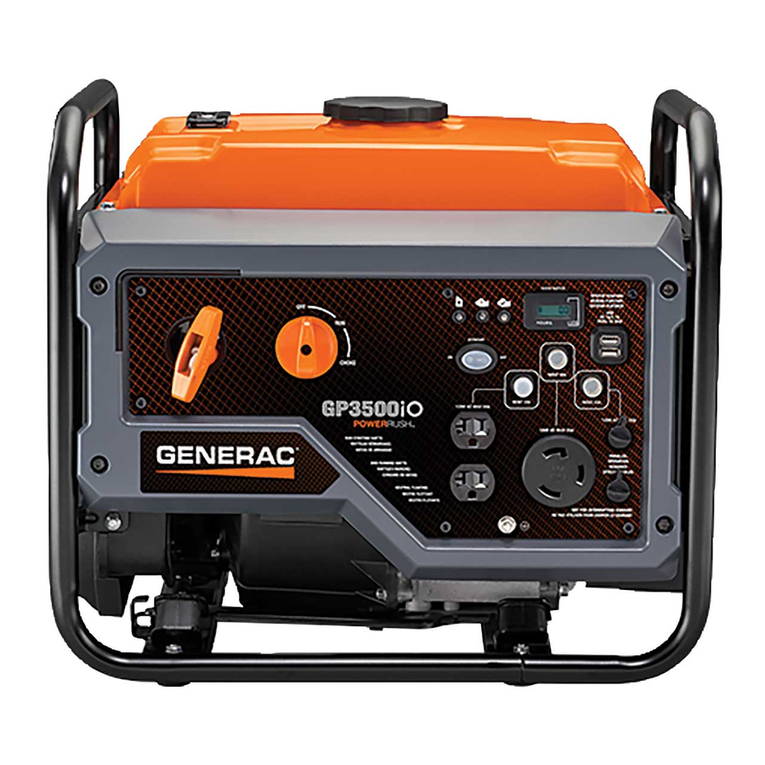
Generac Power Systems
Generac Power Systems GP3500iO owner's manual

Fischer Panda
Fischer Panda Panda 8000x PMS manual
